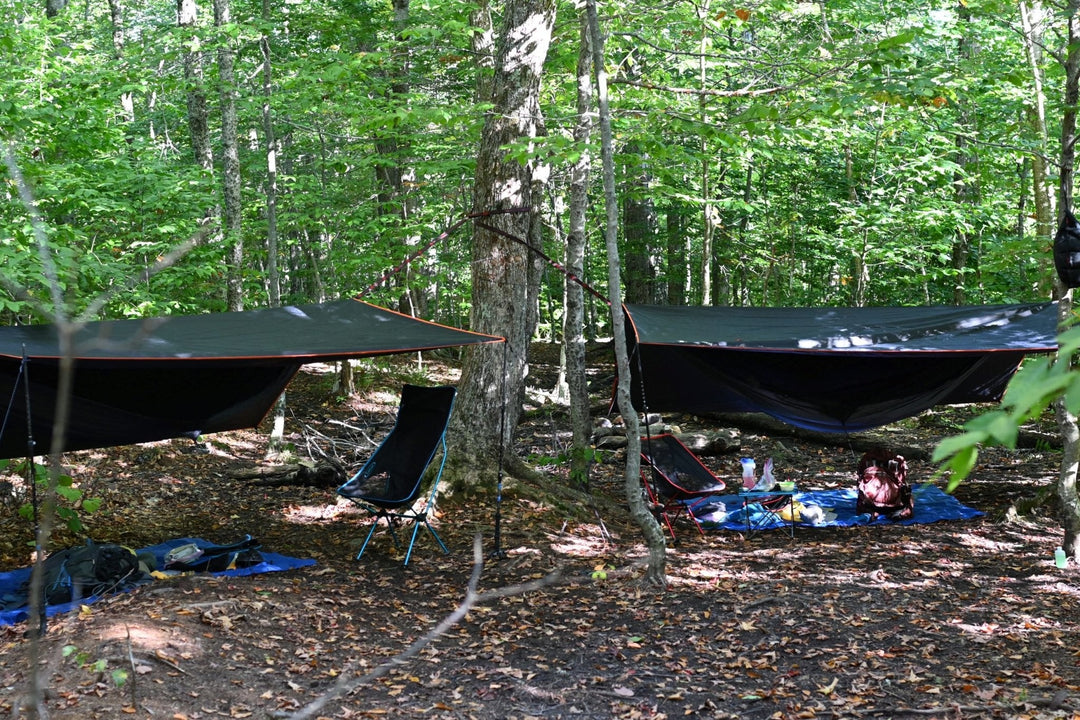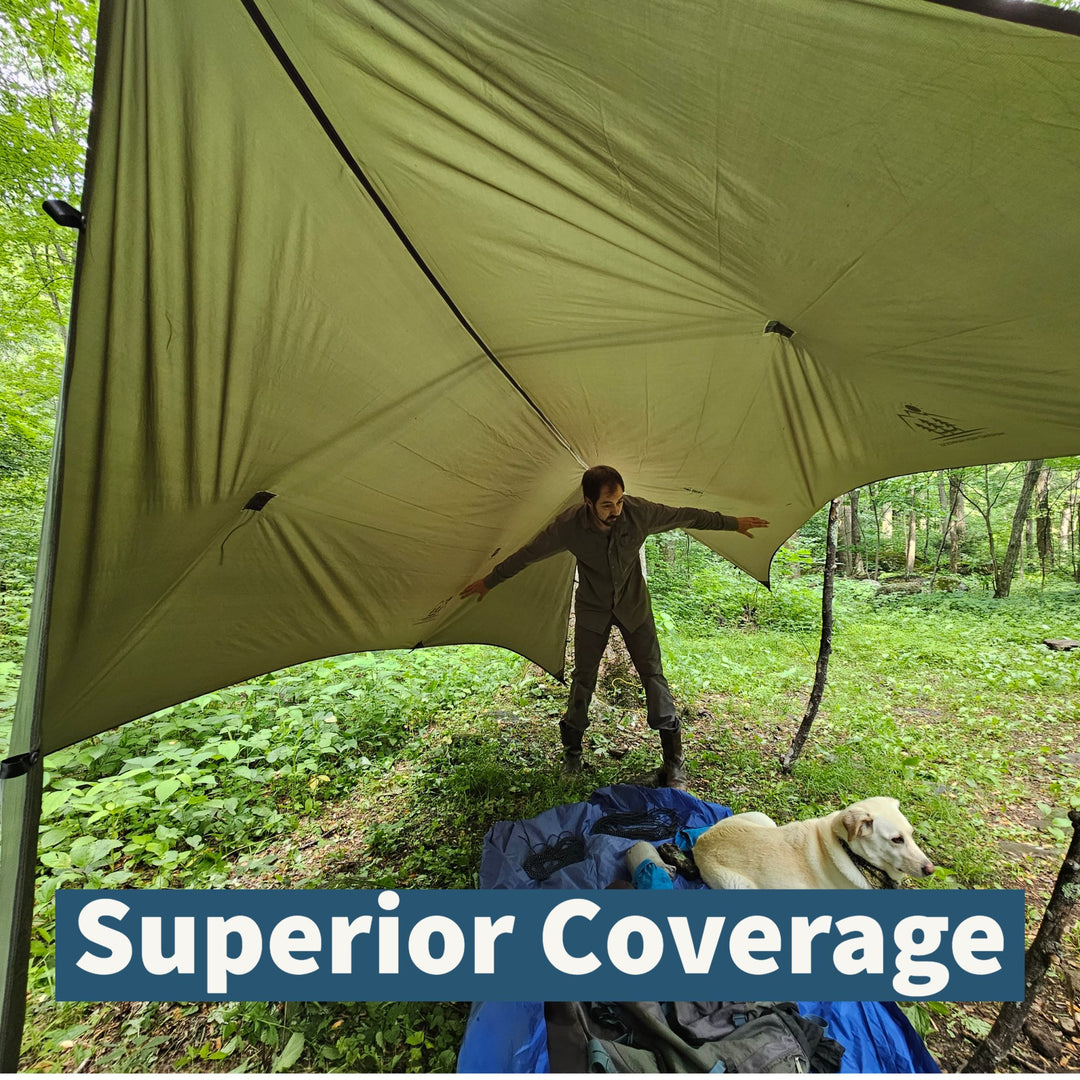How To Stay Warm In A Hammock?
Staying Warm in a Camping Hammock
Once you’ve gotten your hammock hang and suspension dialed in, you’ll want to extend your camping season. You can do this by ensuring that you are toasty warm in your hammock! Camping when the weather begins to cool or is even cold, is a great experience. The bugs have died off, hiking is easier, campfires are more welcomed and the bugs …have died off!
Below you will learn how hammock insulation differs from ground camping and different ways you can stay warm.

Difference between Hammock and Tent Insulation
While both types of camping are similar in regards to insulation there is one big and main difference, the ground. Have you ever seen the road sign “Bridge Ices Before Road”? This is because the air blowing under the bridge cools the road down much quicker. This is the same idea with hammock camping. The ground will prevent the wind from stealing your body heat from you, while you will get “Cold Butt Syndrome” or CBS in a hammock.

“CBS” is made worse because when you get in your sleeping bag and then into your hammock, you are smashing the heat trapping insulation down between your body and your hammock. Insulation works by trapping your body heat in and preventing it from being stolen from you by the elements. This is what makes Hammock camping a little more difficult.
Types of Hammock Insulation Systems
There are numerous different types of ways to keep warm in your hammock and you will really only be limited by your creativity. The main go to, fool proof system, will be an under-quilt and top quilt. This setup can be a little pricey, and most people won’t want to sink this much money into something they are just starting out with. Below will be a list of other types of setups and how to use them.
A Sleeping Pad and Sleeping Bag

When you are just making the switch from ground to Hammock Camping, it’s a safe bet to say you may have a sleeping pad. If not, you can pick one up for pretty cheap. This, paired with a sleeping bag, will be many’s first attempt at sleeping insulated in a hammock. The sleeping pad will give you a barrier between the cold under you, and your body. You will then use your sleeping bag as you traditionally would.
Some pads have “wings” on the side that are more suited for hammocking and keeps the pad better situated under you. However, when just starting out, anything will work including the cheap ones from your local store.
Pro Tip: When entering your sleeping bag, get into your sleeping bag before entering your hammock. If you get into your hammock and then try wiggling into your bag, you will struggle.
PROS:
- Probably have one on hand
- Cheaper compared to other setups
- Protects you from the cold
CONS:
- Pad slides around under you
- If you slide off the pad, you will get cold
- Pads can add weight and take up pack space
Converting a Traditional Rectangular Sleeping Bag
Earlier it was stated that you are really only limited by your creativity. This setup was one that I used just starting out and didn’t have money to spend on a lot of new gear. What this involves is an old rectangular sleeping bag that completely unzips. What you do for this is to unzip the sleeping bag and when you are zipping it back up, off set the zipper so you will create a hole in the end of your bag that you will thread your hammock suspension through. This will create a sleeping bag “cocoon” around your hammock. This prevents you from compressing the insulation and keeps you warm.

Pro Tip:
- Hang your “cocoon” while you are hanging your hammock. That way you don’t have to set it up later.
- When you offset the zipper, you can hand sew the teeth above the zipper to prevent the teeth from coming unzipped.
- Cinch the opening of the bag around you so it hugs you and keeps the heat in.
PROS:
- Can make from materials that you may already have on hand
- Cocoons you while you are in your hammock
- Makes entering and exiting your hammock easier
CONS:
- Makes getting a diagonal lay hard/ not possible
- Takes some modification to work
Under Quilt and Top Quilt
The last form of Hammock Insulation that will be explained is using an Under Quilt and Top Quilt. This setup will most likely be the most comfortable for you and will keep you the warmest. This system is a two part system that consists of a form of a quilt/sleeping bag that hangs under your hammock and then either a quilt or sleeping bag for top coverage.

Your Under Quilt will be suspended under you and your hammock with bungee’s, hooks, clips and the like. This will ensure that the quilt will form a seal around the hammock and your body, preventing the wind from stealing your body heat. Under Quilts can be made from many materials and insulations. What you choose to use will affect the weight, warmth, and compression size of your Under Quilt.
Top Quilts can be something as simple as a quilt or blanket that you carry with you, a mummy sleeping bag that you unzip, or a custom made Top Quilt. Something to keep in mind when getting your Top Quilt is a “foot box”. This is an area in the bottom of the Top Quilt that allows you to insert your feet and keep them warm while you sleep.
Pro Tip:
- Ensure that your Under Quilt stays snug to you and your hammock to prevent heat loss
- Top Quilts work best with a foot box
PROS:
- Makes getting in and out of hammock simple
- Probably the warmest sleeping option for hammock camping
- No fighting with sleeping pad
CONS:
- Costly, especially if you don’t make your own
- Takes practice to get a snug fit
Wrapping up
We hope that you have a better understanding of how to stay warm while hammock camping in cooler and cold weather. If you have any questions, please drop them below or feel free to shoot us an email. Until next time, Get Hanging!





Leave a comment